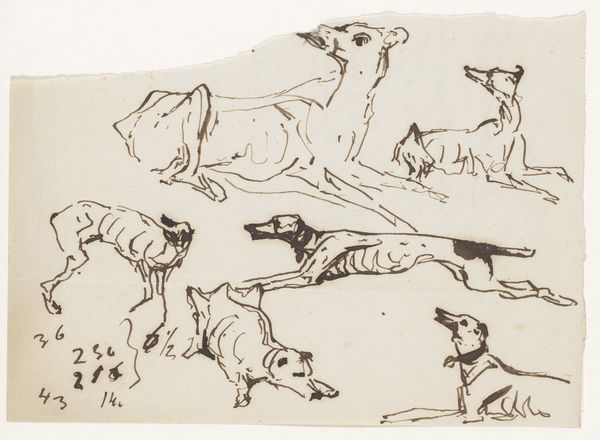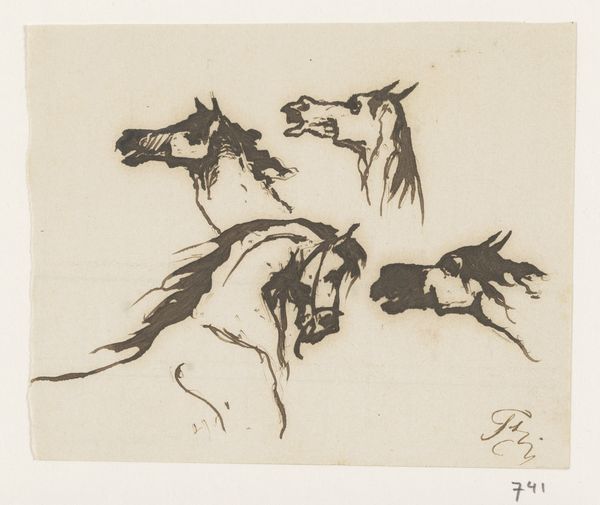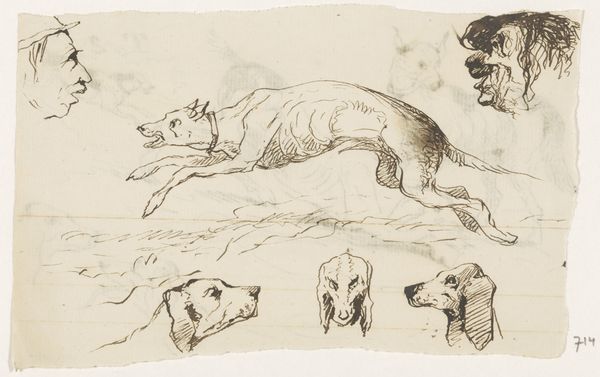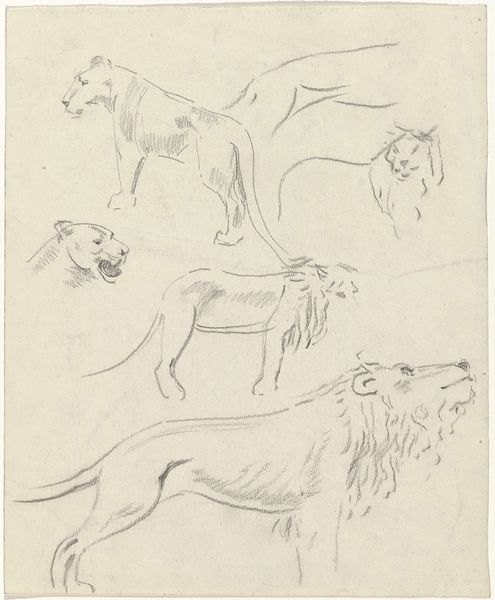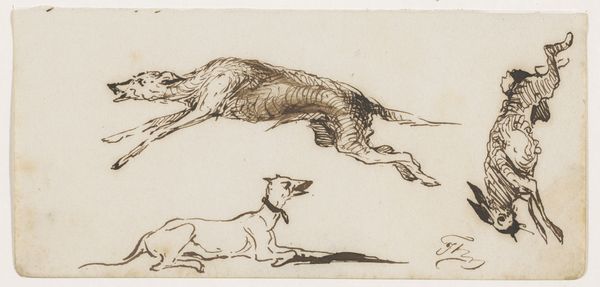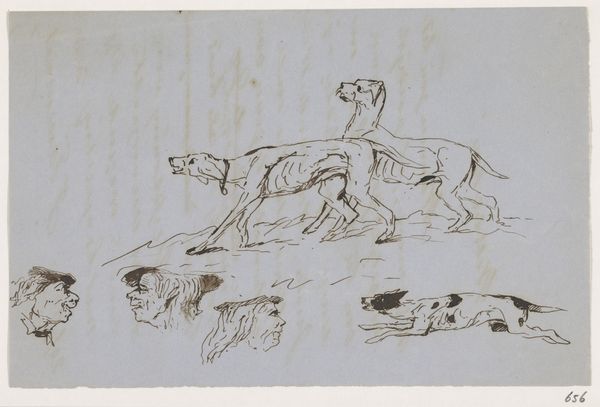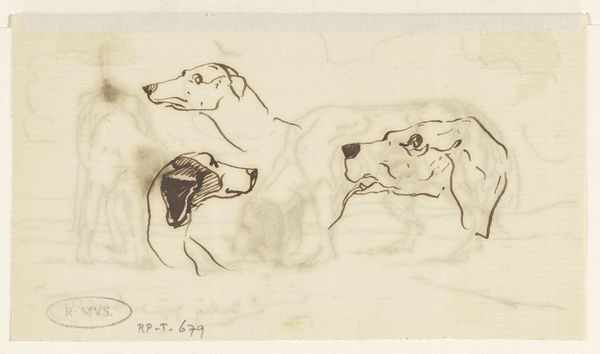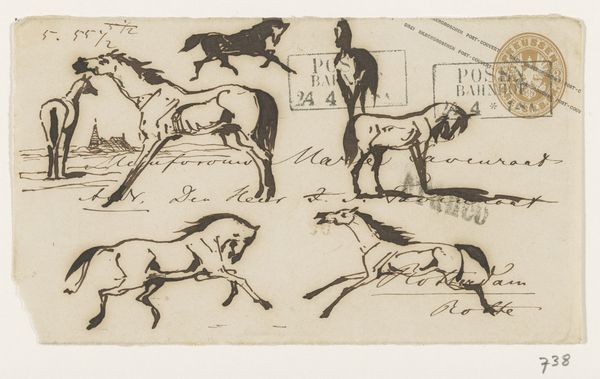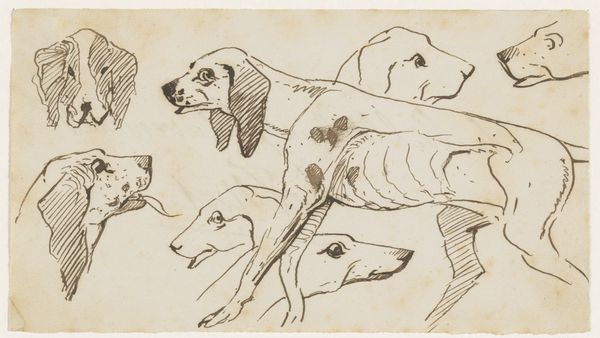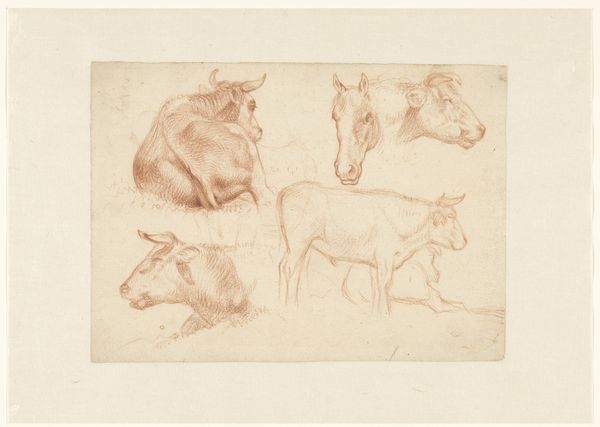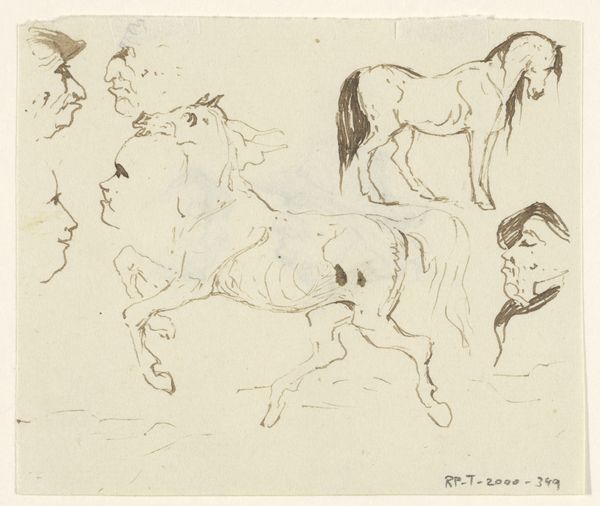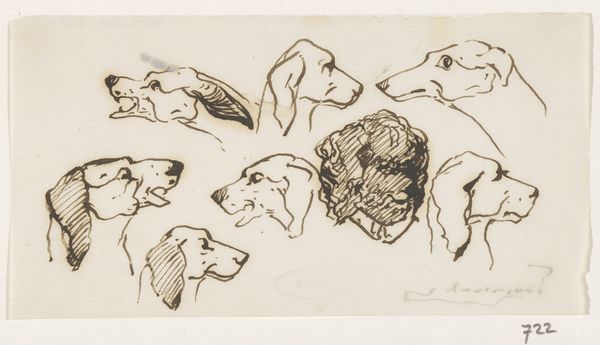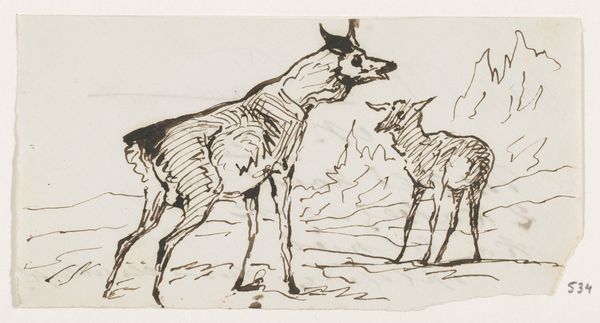
drawing, ink
#
landscape illustration sketch
#
drawing
#
imaginative character sketch
#
quirky sketch
#
animal
#
landscape
#
cartoon sketch
#
figuration
#
personal sketchbook
#
ink
#
ink drawing experimentation
#
sketchbook drawing
#
watercolour illustration
#
storyboard and sketchbook work
#
sketchbook art
#
realism
Dimensions: height 167 mm, width 213 mm
Copyright: Rijks Museum: Open Domain
Editor: This drawing, “Studies van wolven,” by Johannes Tavenraat, created sometime between 1840 and 1880, is remarkable. The various wolf figures, rendered in ink, almost appear to float across the page. It feels like the artist captured different moods and attitudes using such simple means. What do you make of this piece? Curator: Indeed. Observe the confident lines, particularly defining the contours of the animals. Note the deliberate use of hatching and cross-hatching to suggest form and shadow, though without fully committing to realism. Do you see how the blank space functions almost as an active element within the composition? Editor: I do. It keeps it feeling like a study, and not a complete picture. How intentional do you think that was? Curator: Precisely. One cannot be certain of the artist’s intent. However, this deliberate withholding of complete pictorial information—the incomplete background, the varied level of detail in each wolf—invites the viewer to participate, to complete the image in their mind. This is sophisticated control of pictorial space and line. The artist prioritized line as the carrier of meaning. Note the variation of each study -- does that variation itself signify? Editor: I see what you mean. The composition encourages you to focus on the wolves themselves, rather than a narrative context. Perhaps the variation is just exploring form and attitude. Curator: Precisely. The piece prompts us to consider the essence of the animal, isolated from external narratives. Ultimately, it directs us to examine how the artist orchestrates form, line, and space. Editor: That's fascinating! It shifted my perspective from thinking about *what* is represented to *how* it’s represented, which made me see a different value in the study. Curator: An insightful observation, demonstrating the profound potential of formal analysis.
Comments
No comments
Be the first to comment and join the conversation on the ultimate creative platform.
